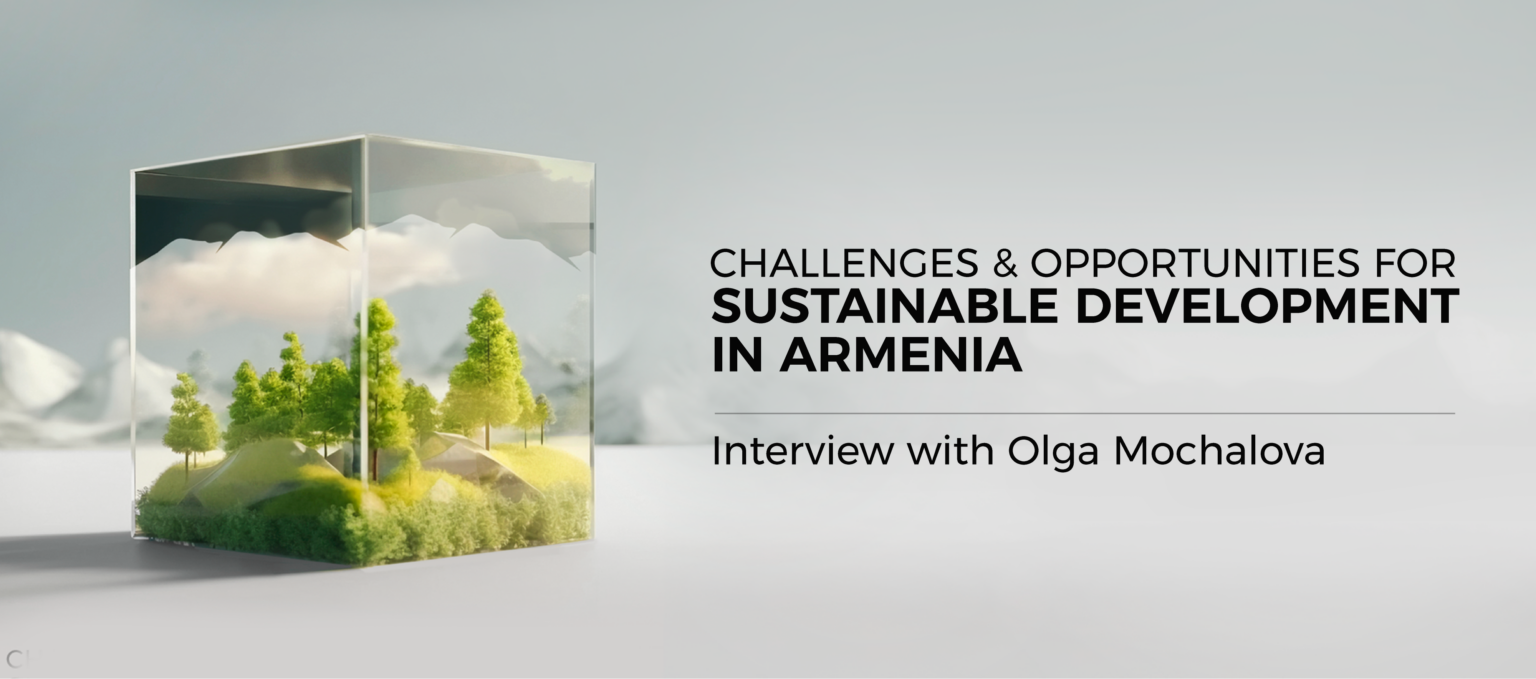How do you define sustainable development in the context of Armenia?
Sustainable development, often seen as development without growth, first emerged as a trend in developed countries. Today, it is more accurately referred to as a circular economy, aiming to extend the life cycle of products through recycling and reuse.
This approach is not just a trend but a necessity globally, including in Armenia.
For instance, you’ve likely noticed yogurt cups made from recycled plastic or clothing produced from reused materials. Many environmental standards now promote the recycling of building materials. Additionally, it’s important to note that Armenia has ratified the Paris Agreement on climate change, which is one of the key goals of sustainable development.
What challenges is Armenia currently encountering in its efforts to achieve sustainable development?
Almost every country sets long-term goals for the next 10, 20, or 30 years. Do they always reach them? No, but everyone applies maximum effort to do their best. Developed economies support developing ones, as we all share the same planet.
For any country, particularly for Armenia, the main challenge is finding a balance between economic growth and the “cost” of implementing sustainable development principles.
How does Armenia manage to balance economic growth while preserving its cultural and natural heritage?
Cultural and natural heritage drives economic growth. Tourism is a key part of Armenia’s economy, with cultural and natural sites playing a central role in attracting tourists.
Can you highlight any successful sustainable development projects or initiatives currently underway in Armenia?
The most evident progress is in the expansion of the solar energy. Additionally, initiatives for improving waste management are also noteworthy.
What role does the government play in advancing sustainable development, and how effective are these initiatives?
Direct, as it shapes the programs designed to achieve sustainable development goals.
In what ways can the private sector help achieve the Sustainable Development Goals in Armenia?
It depends on the field of activity. A café owner could compost food waste, a development company might focus on constructing eco-friendly buildings following international green standards, and banks could offer special loans to support “green” initiatives.
There is a common belief that “green” construction demands significant investment. However, various estimates show that while initial costs may increase by 2-5%, these projects often lead to reduced operating expenses, extended building lifespan, and improved comfort and health. Additionally, such projects are often more attractive for international investment.
What are the primary environmental challenges facing Armenia, and what actions are taken to tackle them?
Environmental issues often occur in areas with high human impact. One of the major concerns is the air quality in urban areas, which can have severe and irreversible effects on health. Although the situation of Lake Sevan is not as critical as the one of the Aral Sea, it remains a significant issue due to its importance as a source of drinking water supply and its role as a vital natural ecosystem.
Can you talk about the role of education and awareness that contributes to encouraging sustainable practices among the citizens of Armenian?
Even small initiatives that establish simple habits are crucial. For instance, collecting batteries and broken household appliances can make a difference.
Providing information on easy ways to enhance energy efficiency and reduce consumption can motivate people to take action.
In what ways is Armenia incorporating renewable energy into its development strategies?
Currently, renewable energy sources generate slightly under 30% of Armenia’s energy production, which is comparable to the output generated by the nuclear energy.
Armenia is experiencing a “surge” in the construction of wind and solar power plants. The country’s climate is highly favorable for such initiatives, and international financial institutions are actively supporting these projects.
What potential opportunities exist for Armenia to lead in the field of sustainable tourism?
There is a type of tourism that involves getting closer to the nature with backpacks, tents, and mountain trips. However, this romance may not appeal to everyone.
Tourism is new emotions and discoveries and at the same time ensuring comfortable conditions.
It’s essential for tourists to enjoy beautiful natural settings, visit historical sites, immerse themselves in local culture, and enjoy the local cuisine. To make these experiences enjoyable and preserve heritage, these routes should be well-maintained and thoughtfully developed.
Emotional richness involves enjoying a comfortable stay in hotels with international service standards. However, hotels typically have high energy and water consumption, as these costs are included in the room price and the guests are not psychologically ready to conserve. Therefore, it’s crucial for hotel operators to offer solutions that not only ensure comfort but also focus on saving the natural resources.





















